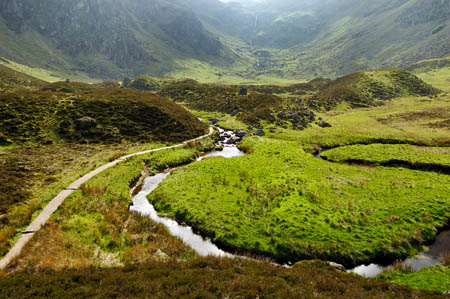
Corrie Fee. Photo: Lorne Gill/Scottish Natural Heritage
It is one of the wildest parts of Britain, and was one of the last to be influenced by human activity.
Its post-glacial landscape is home to many rare species and there are still areas untouched by humans.
Now, a walkers’ guide has been produced to the jewels of Corrie Fee, a hidden valley in the south-eastern corner of the Cairngorms national park.
The leaflet has been put together by Scottish Natural Heritage and marks a walking trail starting at the head of Glen Doll and climbing on to the Cairngorm plateau through the Corrie Fee National Nature Reserve.
The trail starts in woodland and rises to the Corrie of Fee and the munros of Mayar and Driesh.
Fauna and flora include red squirrels, mountain hares, deer, ptarmigan, snow bunting, dotterel, and alpine plants. Rare plants, such as the tiny woolly willow shrubs, still survive on steep slopes, in gullies and on inaccessible ledges.
Shona Hill, Scottish Natural Heritage area officer, said: “Corrie Fee is a rare place in Scotland – one where there are still areas that have been untouched by humans. Walkers have the chance to look up to the crags where there are extensive remnants of rare willows and alpine plants.
“There are also more common plants like alpine saxifrage, roseroot and a host of interesting wildlife.
“Whether you’re a more casual or a keen walker, I’d encourage you to come along to the corrie: make it a game for the family and use our new leaflet to identify all the things that make the reserve special.”
The leaflet is available to download at the SNH website. It can also be picked up at the ranger base in Glen Doll, at NO 283 761.